 Even by the motor industry's standards, Lancashire-based TVR has had a chequered career, with fortunes fluctuating throughout their history.
Even by the motor industry's standards, Lancashire-based TVR has had a chequered career, with fortunes fluctuating throughout their history.
The original company was founded by designer Trevor Wilkinson.
Born and raised in the Nort-West of England in the seaside town of Blackpool, Wilkinson left school at 14 to begin working as an engineering apprenticeship at a garage in the city.
A skilled engineer driven with ambition, while still in his early Twenties, Wilkinson established his own engineering business that he named Trevcar Motors.
In their early days, Trevcar Motors offered all kinds of engineering services including renovation and repairs for both private cars and trucks.
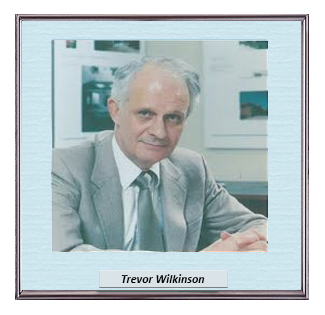 In 1947 Wilkinson convinced Jack Pickard, another local boy and confirmed car enthousiast to join his new company, which they rapidly renamed TVR Engineering-dropping several letters from Wilkinson's first name.
In 1947 Wilkinson convinced Jack Pickard, another local boy and confirmed car enthousiast to join his new company, which they rapidly renamed TVR Engineering-dropping several letters from Wilkinson's first name.
TVR Engineering consolidated steadily, continuing to focus their activities on general mechanical engineering work while keeping their hand in carrying out repairs and renovations for local car owners.
As the Fifties approached, TVR released their first production car, which Wilkinson and Pickard lovingly titled , the Mark I
Available onlyin kit form, the Mark was a two-seat fixed head coupe with tubular backbone chassis and a choice of either a supercharged 1172-cc side-valve Ford or single overhead camshaft( ohc) Coventry Climax 1100 engine.
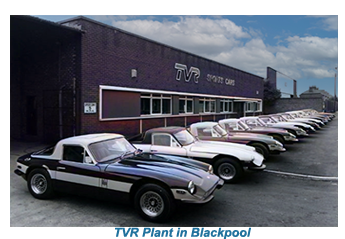 Just a few of these cars were sold, yet a spark was kindled that would go on to see the formation of a wholly owned offshoot of TVR, Layton Sports Cars Ltd, whose charter was to produce sports cars.
Just a few of these cars were sold, yet a spark was kindled that would go on to see the formation of a wholly owned offshoot of TVR, Layton Sports Cars Ltd, whose charter was to produce sports cars.
Layton Sports Cars Ltd was run by Trevor Wilkinson, who working in partnership with Henry Moulds and David Scott produced the first TVR, the Grantura.
The TVR Grantura used a tubular chassis with all-around independent suspension by a system of trailing links and torsion bars borrowed from the VW front end.
The bodywork was in glass-fibre, featuring a fashionably long down-swept nose, the whole of the section forward of the front wheels and above the waistline hinging to give first-rate access to the engine.
![]()
The TVR Grantura was available to complete or in component form, and with a little time and skill, a very pleasant personalised GT car could be produced from the 'kit'.
In 1961 small quantity production continued, while two new companies, TVR Cars Ltd and Grantura Engineering Ltd were formed, the first to handle production and the second to handle marketing.
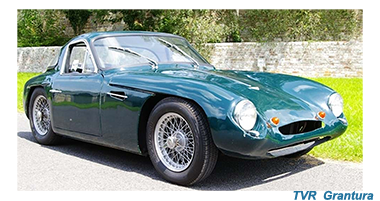 TVR Cars was liquidated just a year later although Grantura Engineering continued to run the company, releasing a new Mark III model was shown in New York in April 1962, and fortunes were revived by orders to the tune of around eight million pounds.
TVR Cars was liquidated just a year later although Grantura Engineering continued to run the company, releasing a new Mark III model was shown in New York in April 1962, and fortunes were revived by orders to the tune of around eight million pounds.
In 1963 the Mark III Grantura was replaced by the new MGB-powered TVR 1800, using the same coil-and-wishbone all-independent suspension system, but with a slight revision to the spring rates and damper settings.
 The new engine in standard trim produced 94 bhp net at 5,500 rpm from its 1798 cc and this gave a maximum speed of nigh-on 120 mph, with acceleration to match. A major characteristic of the car was its sure-footed handling, the precise steering and throttle control combining to give the driver complete command over the car's attitude.
The new engine in standard trim produced 94 bhp net at 5,500 rpm from its 1798 cc and this gave a maximum speed of nigh-on 120 mph, with acceleration to match. A major characteristic of the car was its sure-footed handling, the precise steering and throttle control combining to give the driver complete command over the car's attitude.
With the Grantura 1800 as their sole model, TVR remained operational - although under a cloud of considerable financial pressure.
Early in 1965, the Mark III Grantura 1800 was replaced by a Mark IV version, which had improved weight distribution (the engine having been moved forward), slightly revised door trim, a wooden fascia on the still very high scuttle and TR4 front suspension uprights and brake callipers.
The tail was also cut off short in a Kamm design, and a huge rear screen which made for excellent visibility was wrapped over the sloping roof.
The company was still ambitious beyond its resources, however, particularly in its attempt to enter the luxury car market in 1965 with a handsome body design by Fiore, based on a lengthened V8-powered chassis. In appearance, Fiore's body was similar to that of the later Aston Martin DBS.
TVR Cars Ltd went into liquidation, although in September 1965 their assets were acquired by Arthur Lilley and his son Martin, who became Managing Director of the new company — TVR Engineering.
The Lilleys continued production of the 1800 with its MGB engine, with the model eventually appearing in 1800S form with an engine tweaked to generate 95 bhp capable of reaching from 0-50 mph in about 9 sec, and reaching a respectable maximum speed of 107 mph, while maintaining acceptable standards of comfort and control.
![]()
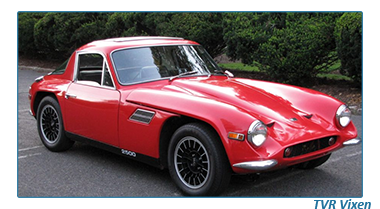 The V8 version was continued as the TVR Tuscan for 1967, powered by a massive 4727-cc Ford V8 engine. The Tuscan provided excellent performance, streaking from 0-50 mph in only 4.9 sec, and reaching a maximum speed of no less than 140 mph.
The V8 version was continued as the TVR Tuscan for 1967, powered by a massive 4727-cc Ford V8 engine. The Tuscan provided excellent performance, streaking from 0-50 mph in only 4.9 sec, and reaching a maximum speed of no less than 140 mph.
Despite the arrival of Tucson, TVR continued to produce the 1800, although renamed as the TVR Vixen, still using the MOB engine in its standard form, although the new 1599-cc Ford GT engine, producing 95.5 bhp gross at 'five-five could be specified. This powertrain was mated via a diaphragm spring clutch to an all-synchromesh Ford gearbox.
The TVR Vixen car retained the cornering capabilities of the earlier models, although the drawbacks of sluggish steering and minimal luggage space persisted. The interior was still very well-appointed, especially for a car which was not mass-produced and very well priced.
In 1966 TVR produced around eighty-five cars in the mill at Blackpool, in 1967 the total rose to 200, and in 1968 to 250 vehicles. In 1968 the company purchased some land at Marton, Blackpool, which it initially planned to use for a new body and paint shop.
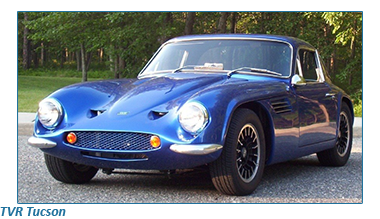 Soon TVR began to concentrate production in Blackpool and by the end of 1969. all oftheir production was based in Marton.
Soon TVR began to concentrate production in Blackpool and by the end of 1969. all oftheir production was based in Marton.
Thus TVR was in a strong position at the end of a decade of fluctuating fortunes, producing pleasantly individual, well-built and well-mannered cars.






